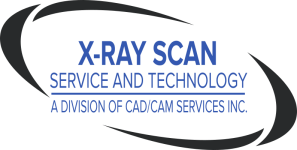X-Ray Film Scanners and Digitizers, X-Ray Film Scanning Services and Software
What to Do with Film X-Rays and your New EMR
posted Oct-31-2014If you’re a healthcare organization that has recently gone digital, but you still have X-Ray film, then your workflow is not as efficient as it should be. Most commonly moving to digital patient records
means using an EMR solution that enables healthcare workers to access patient records from multiple points of care, but most EMRs don’t include medical images.
 While knowledgeable and tech-savy patients expect to see their physicians carrying an electronic note pad, not paper files, they’re not necessarily surprised when the doctor is carrying an envelope of film in addition to his lap top. Unfortunately, this dichotomy is because medical images are often overlooked when a medical organization goes digial. Many EMR systems do not provide automatic availability of integrated, easy to access, patient-centric medical images and reports. Because of the advancements made in medical imaging, most patients have routine medical images that are part of their comprehensive medical files…for instance, mammography and other radiographic procedures that are part of overall health care.
While knowledgeable and tech-savy patients expect to see their physicians carrying an electronic note pad, not paper files, they’re not necessarily surprised when the doctor is carrying an envelope of film in addition to his lap top. Unfortunately, this dichotomy is because medical images are often overlooked when a medical organization goes digial. Many EMR systems do not provide automatic availability of integrated, easy to access, patient-centric medical images and reports. Because of the advancements made in medical imaging, most patients have routine medical images that are part of their comprehensive medical files…for instance, mammography and other radiographic procedures that are part of overall health care.
Medical imaging: The Neglected Part of Patient Records
EMR systems focus on clinical intelligence and paper-based records, but in truth, healthcare providers generate large amounts of medical imaging information – CT Scans, MRIs, X-rays, mammograms and other radiological procedures generate enormous image files. Typically, this data is spread throughout the organization and not centrally managed, so, if a patient needs a describe the imagecopy of a mammogram, she goes to one department; for an MRI, it’s another department. Each of the individual departments owns and manages their own images, with the duplication of personnel required to do this across the various departments.
The need, then, is for a solution that brings medical images into the EMR, providing a central Medical Imaging Repository that can be accessed by all of your authorized healthcare personnel, anywhere, anytime, and that enables your patients to move from one doctor to another within your organization with complete records available in each department
Perceived Objections to Including Images in EMR
Many organizations never even consider including images in their EMR, because they have already concluded that it can’t be done, because:
The images are too large and too difficult to store and handle in a central repository
Viewing images means waiting for a time-consuming download of the large image files.
Physicians really only need to see the written report – they don’t have to see the actual image
The Ideal Solution
The ideal solution is an enterprise-wide Medical Imaging Repository that starts by scanning all existing medical films and disposing of them with a reliable recycling facility. You should look for a vendor-neutral image management solution that will integrate with any EMR system and that provides a zero-footprint viewing capability that requires no download. This ideal solution should be:
- PACS Vendor neutral so that it can be used in environments where PACS and imaging systems may change over time
- Standards based and not limited to storing proprietary data formats
- Capable of integration within an EMR system, so that the images are accessible with a single log-in to the ERM.
- Readily available from any location, anytime
- Secure and redundant
- Rapidly scalable
- Support DICOM standards and frameworks
- Support multiple imaging departments
- Vendor neutral
Scan Your Films to the Cloud
By scanning your films to a Cloud-based solution that will integrate with your EMR, your physicians will be able to access images as part of their patient records whenever they need to. Radiology Services Online (RSO) is one company who offers a proven medical imaging cloud that can bring diagnostic quality images to your EMR system. Both EMR vendors and medical organizations with established in-house EMR systems can benefit from scanning medical film and adding the digital images to your EMR.

